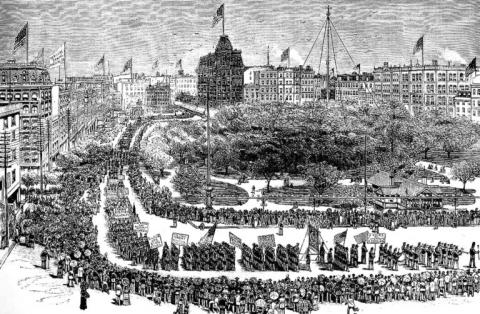New York's union ranks dropped by nearly 5 percent between 2015 and 2016, but the state remained the nation's leader in unionized workers.
The drop of about 96,000 union workers in New York erased an increase of 58,000 in union employees made between 2014 and 2015, according to records released last week by the federal Bureau of Labor Statistics.
Still, New York's unionized workforce has remained fairly steady over the past decade — giving the state by far the largest percentage of union members of any state and bucking national declines in union membership.
Union members accounted for 23.6 percent of wage and salaried workers in New York in 2016. Nationwide, the average was 10.6 percent.
So overall, New York had 1.9 million union members last year, second only to California with 2.6 million.
"We take great pride in continuing to lead the country in union membership, as well as a long and storied history of providing a strong voice for working men and women throughout our state," Mario Cilento, president of the New York AFL-CIO, the umbrella organization for the state's unions, said in a statement.
The decline in union membership across the nation has been stark. There were 14.6 million union workers nationally last year, down from 17.7 million in 1983, when 20 percent of the nation's workforce was unionized.
In New York, union membership hit a 10-year high in 2007 when 25.2 percent of the workforce belonged to a union. The lowest level of the past decade was in 2012, when 23.2 percent were in a union.
The power of the unions in New York is found in policy and lobbying in Albany. About half of the union workers are in state and local governments; 93 percent of the state workforce is unionized.
The 600,000-member teachers union, the New York State United Teachers, is among the top lobbying groups each year at the Capitol, as is SEIU 1199, a health-care workers union.
Last year, SEIU helped lead a charge to increase the state's minimum wage to $15 an hour downstate by 2021, which was backed by Gov. Andrew Cuomo and the state Legislature.
Unions also were successful last year in getting a 12-week paid-family leave law.
This year, unions are aligned with Cuomo to keep higher taxes on millionaires — a measure set to expire at year's end.
"Union membership continues to be the best way for working men and women to get ahead; particularly at a time when our economy is so out of balance," Cilento said.
E.J. McMahon, president of the fiscally conservative Empire Center, contended that the state's unions have "a huge and very costly impact on public policy."
He said public salaries and benefits are "basically the tail that wags the public-sector dog. The other half are employed largely in either construction or in health care, both of which are heavily dependent on government subsidies."
After New York, the largest union membership rates were in Hawaii at 19.9 percent and Alaska at 18.5 percent.
Nine states had union membership rates below 5 percent last year — with the lowest, 1.6 percent, in South Carolina, the federal data showed.
Joseph Spector is chief of USA TODAY Network's Albany Bureau.


Spread the word